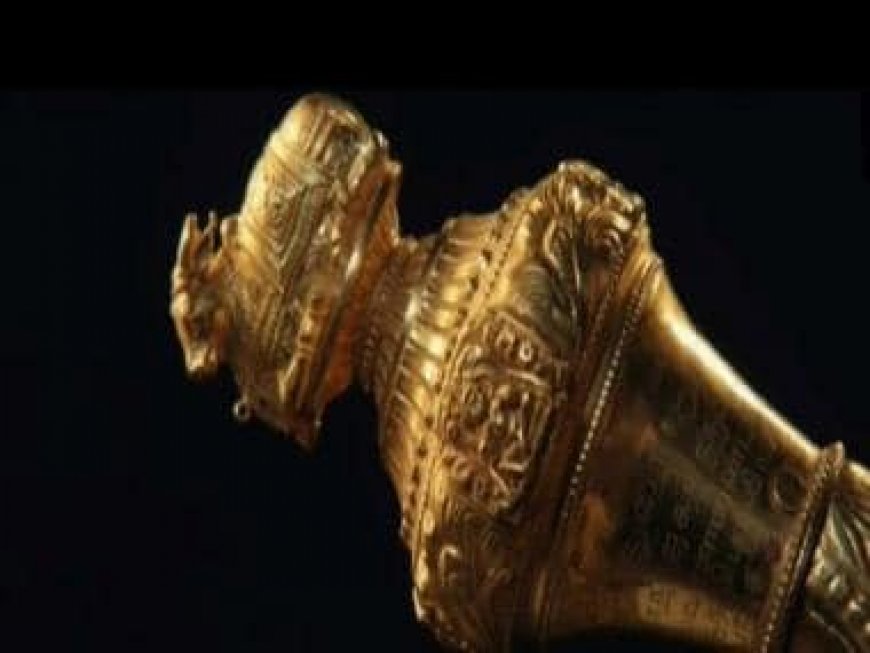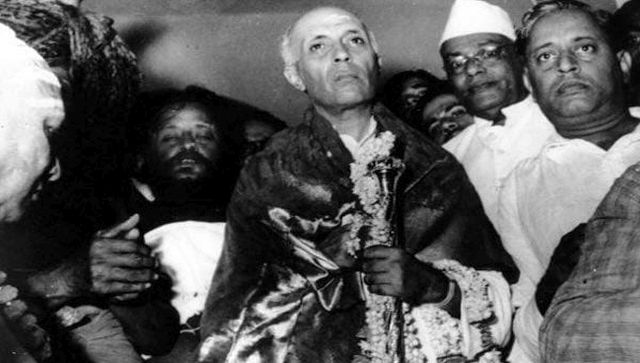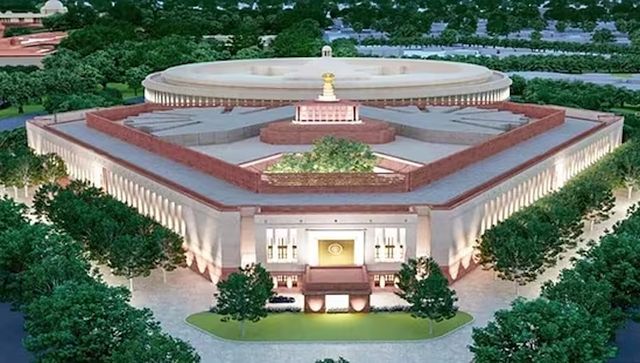‘Sengol’, the historic sceptre, to be placed in new Parliament and its link to Nehru
‘Sengol’, the historic sceptre, to be placed in new Parliament and its link to Nehru

India is getting a new Parliament building and preparations are in full swing. The building will be inaugurated on 28 May by Prime Minister Narendra Modi, as his government completes nine years in power. There will be something new and something old in the structure, whose construction began in January 2021. A historic sceptre, a ‘sengol’, will be reintroduced in the building, announced Union Home Minister Amit Shah on Wednesday.
‘Sengol’, a symbol of independence
PM Modi will install the golden sceptre near the Speaker’s seat as part of the inaugural celebrations of the new Parliament building on Sunday. Traditionally called the ‘sengol’, it has roots in Tamil culture. The word sengol means “full of wealth”.
The ‘sengol’ was given to India’s first prime minister Jawaharlal Nehru by the people of Tamil Nadu as the country became independent.
Shah said that the sceptre is a “significant historical” symbol of Independence; it was handed over to Nehru to mark the transfer of power from the British to India.
“This sengol has huge significance. When PM Modi got to know about this, he asked to get more info on this… On 14 August 1945, around 10:45 pm, Nehru accepted this sengol from the people of Tamil Nadu. It is a sign of a shift of power from Britishers to the people of this country,” Shah said as he spoke to the media about the inauguration.

The history of the ‘sengol’
According to the home minister, the ‘sengol’ has great significance in India, especially in Tamil culture. It dates back to the Chola dynasty, when such sceptres were used in the coronation of kings. It served as a ceremonial spear and was considered a sacred symbol of authority, representing the transfer of power from one ruler to the next. The one accorded the ‘sengol’ is expected to impart a just and impartial rule.
In modern times, the ‘sengol’ holds deep cultural importance and is part of various auspicious events, festivals, and ceremonies. It is seen as a tribute to the rich history and legacy of Tamil culture.
Also read: Who should inaugurate Parliament building? The political row explained
‘Sengol’ and Indian Independence
Ahead of the announcement of independent India, Lord Mountbatten, the last viceroy, asked Nehru how India would mark the historic moment of the ceremonial transfer of power. This got the leader thinking and he said he would discuss it with his colleagues.
Nehru reportedly broached the subject with his Indian National Congress colleague C Rajagopalachari, who after a lot of research, said that Nehru could mark the historic moment by holding the ‘sengol’.
Rajagopalachari, commonly known as Rajaji, told Nehru about the Tamil tradition, where a high priest hands over a sceptre to a new king when he comes to power. He said that his tradition was followed during the reign of the Cholas and suggested this could mark India’s freedom from the Raj.
It then became Rajagopalachari’s responsibility to arrange for the ‘sengol’.
Union Home Minister Amit Shah announces that Prime Minister Shri Narendra Modi will instal the sacred Sengol, gifted by a group of Priests on the eve of India’s independence, in 1947, marking the transfer of power, in the New Parliament on 28th May 2023.
The sacred Sengol… pic.twitter.com/jLjQqZiWAB
— Amit Malviya (@amitmalviya) May 24, 2023
The making of the ‘sengol’
Arranging a sceptre to mark India’s independence was a big task. Rajagopalachari got in touch with Thiruvaduthurai Atheenam, a prominent centuries-old mutt, in Tanjore in present-day Tamil Nadu. The seer of the mutt accepted the responsibility.
The gold-plated silver ‘sengol’ was reportedly designed by Vummidi Bangaru Chetty, a jeweller in then Madras. Vummidi Ethirajulu, 96, and Vummidi Sudhakar, 88 years who made the sceptre are still alive. It is five feet in length and has a “Nandi” bull (the vahan of Lord Shiva) on top, symbolising justice and strength.
Row over new Parliament: Who inaugurated Sansad buildings in the past?
After the ‘sengol’ was ready, a senior priest gave it to Mountbatten. It was then taken back and sprinkled with Gangajal. It was then taken to Nehru in a procession and handed over before midnight on the eve of independence. A special song was composed and rendered as the sceptre was handed over in the presence of Dr Rajendra Prasad and several other leaders.
The ‘sengol’ has since assumed importance as the sceptre of righteousness. It is a reminder of India’s diversity and the birth of a great nation. It has been preserved in a museum in Allahabad since 1947.

‘Sengol’ and the new building
Now the ‘sengol’ will be part of the rituals as India gets a new Parliament building. PM Modi will receive the sengol from Tamil Nadu before the inauguration on Sunday and he will place it inside the new Parliament Bhavan. “This will be part of the foundational event and will Amrit Kaal,” Shah said.
Sengol holds a great significance in India's history...watch when and how it meant a holy transfer of power from Britishers to the people of our country!
Fetch the full video here
What's Your Reaction?



























































